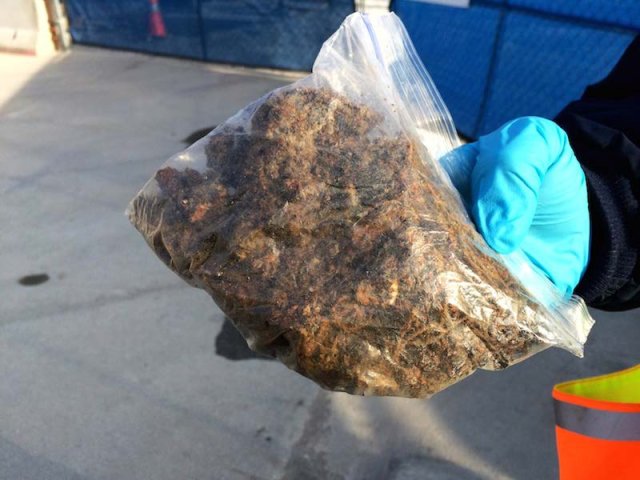History and Background
History
Charles R. Lindsay Jr. founded the company bearing his name in 1902. Until the mid-1930s, the Lindsay Light Co. manufactured incandescent gaslight mantles at several addresses in Chicago's downtown Streeterville neighborhood.
A gaslight mantle is a small fabric bag infused with thorium or other metal nitrate that fits over the gas source. The heat from the gas flame burns off the mantle fabric leaving a fine metal mesh that glows brightly. The Lindsay Light Co. used the radioactive chemical thorium nitrate to manufacture their gaslight mantles.
Lindsay obtained thorium containing ore, typically monazite, to refine and extract the thorium. The refining process produced a sand-like waste known as thorium mill tailings, which were used for fill in the low-lying Streeterville area of Chicago and apparently former boat slip areas on the south side of the Chicago River directly south of Streeterville.
Lindsay Light's first location was at 22 W. Hubbard St. The company later expanded its operations to 316 E. Illinois St. and 161 E. Grand Ave. Ore containing radioactive thorium was processed at the Illinois Street site and the mantles were manufactured at the Grand Avenue location. In 1932, the company began moving its operations to West Chicago, Ill. (see Kerr-McGee Superfund site.) The company closed the last of its Chicago facilities in 1936.
Thorium contamination
EPA first discovered thorium contamination at Lindsay Light's Illinois Street location in 1993. Since then, further investigations found soil contamination at more than a dozen locations in the Streeterville neighborhood and additional locations on the south side of the Chicago River. In 2014, thorium-contaminated asbestos was discovered in some areas of the Lindsay Light site. The PRPs and EPA worked together to immediately clean up any identified thorium contaminated material as well as any identified thorium contaminated asbestos in the area.
Lindsay Light Thorium Monitoring Map
Thorium-contaminated materials emit gamma radiation. However, if soil, concrete, or asphalt is covering the thorium-contaminated materials, that cover will shield the radiation. It will also prevent people from touching, inhaling, or eating the contamination.

In the Streeterville and New Eastside neighborhoods, remaining thorium contamination is buried or shielded, so there is minimal health and safety risk to people walking on sidewalks or inside buildings. When this contamination is disturbed, the risks increase.
To protect workers who might come into contact with radiation and thorium in subsurface soil, the EPA and city of Chicago developed a system that requires anyone planning to work in subsurface soil in the Streeterville and New Eastside neighborhoods to monitor the soil for thorium contamination. EPA also works with new developers in the area to ensure construction projects do not interfere with the safety of workers and the public.
To date, cleanups have been completed at more than a dozen properties. More than 55,000 cubic yards of thorium-contaminated materials have been removed and shipped to out-of-state facilities licensed to accept radioactive waste. Several properties known to have contamination remain to be cleaned up. EPA’s cleanup at the Lindsay Light site is ongoing.
Working in the rights-of-way within the areas that possibly might have thorium-contaminated soil
Because of the long-lived nature of thorium contamination (some radioactive contamination is very short lived), the need to know that these areas are safe for workers will continue far into the future. Therefore, EPA has agreed to host a web-based repository of radiation testing reports and other technical documents for the benefit of those working within the rights-of-way. The reports in the web-based repository allow utility companies and city departments to easily check to see if an area has already been tested and determined to be clear of contamination, or if the area has never been investigated and still needs to be tested. The repository should save companies time and money by avoiding the duplication of radiation testing.
